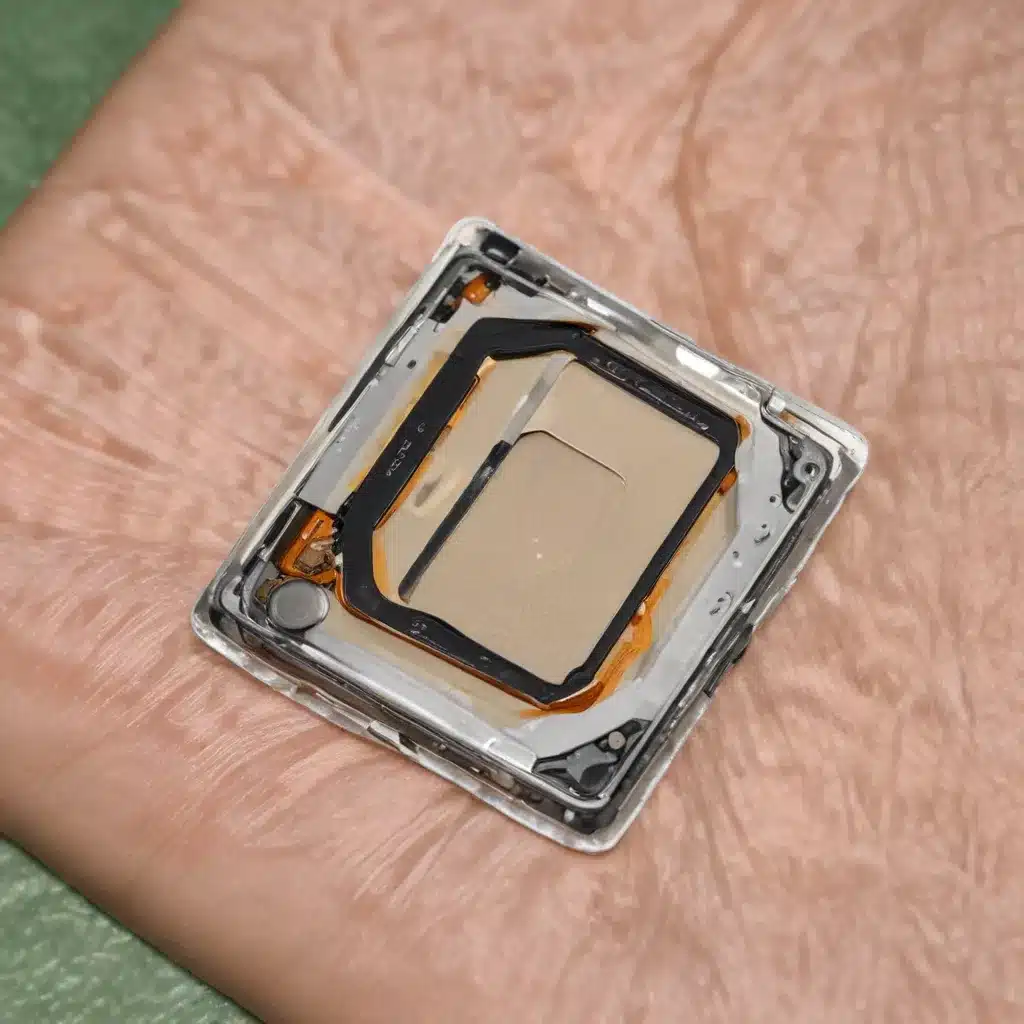
Diagnosing a Malfunctioning Home Button
As an experienced IT professional, I’ve encountered numerous issues with smartphone home buttons over the years. From unresponsive buttons to complete failures, these common problems can be incredibly frustrating for users. However, with the right troubleshooting steps and a bit of technical know-how, many of these home button issues can be resolved without the need for professional repair.
One of the most common culprits behind a malfunctioning home button is a faulty ribbon cable. The home button on most smartphones, including iPhones and Android devices, is connected to the main logic board via a thin, flexible ribbon cable. Over time, this cable can become damaged, leading to intermittent or complete loss of home button functionality.
If you’re experiencing issues with your smartphone’s home button, such as a sluggish response, inconsistent performance, or a complete failure, it’s important to first diagnose the root cause. Here are some common symptoms that may indicate a problem with the home button ribbon cable:
- Unresponsive or Intermittent Home Button: If your home button sometimes works and sometimes doesn’t, it could be a sign of a loose or damaged ribbon cable connection.
- Registering Multiple Presses: If the home button registers more than one press for a single input, it may be a sign of a cable issue.
- Completely Non-Functional Home Button: A home button that no longer responds at all is a clear indication of a failed ribbon cable.
In these cases, the most likely culprit is a problem with the home button ribbon cable. Fortunately, in many instances, this is a relatively straightforward repair that you can tackle yourself.
Preparing for the Repair
Before diving into the repair process, it’s essential to have the right tools and materials on hand. For replacing a smartphone home button ribbon cable, you’ll need the following items:
- Replacement Home Button Ribbon Cable: Ensure that you purchase the correct cable for your specific smartphone model. Compatibility is crucial, as using the wrong cable can damage your device.
- Precision Screwdriver Set: You’ll need a variety of small screwdrivers, including Philips and Torx bits, to disassemble your smartphone.
- Tweezers: Delicate tweezers will help you handle and position the ribbon cable during the repair.
- Isopropyl Alcohol: This high-purity alcohol is great for cleaning the connectors and ensuring a proper cable connection.
- Protective Gear: Consider wearing anti-static gloves to prevent any static discharge that could damage your device’s sensitive components.
With the necessary tools and materials gathered, you’re ready to begin the step-by-step process of replacing the home button ribbon cable.
Step-by-Step Replacement Guide
1. Power Down and Prepare Your Device
Start by powering down your smartphone completely. This will ensure that no electrical currents are running through the device during the repair process, reducing the risk of damage.
2. Disassemble the Smartphone
Locate the screws on your device’s casing and carefully remove them, following the manufacturer’s recommended disassembly instructions. This may involve removing the back cover, battery, and other components to access the phone’s internal components.
3. Locate the Home Button Ribbon Cable
Once you’ve gained access to the device’s internals, identify the home button ribbon cable. This thin, flexible cable is typically connected to the main logic board and routed through the smartphone’s chassis.
4. Disconnect the Existing Ribbon Cable
Gently lift the cable’s connector from the logic board, taking care not to damage the delicate pins. Use your tweezers to assist in this process, as the connectors can be quite small and fragile.
5. Clean the Connector Surfaces
Before installing the new ribbon cable, use a small amount of isopropyl alcohol and a clean, lint-free cloth to thoroughly clean the connector surfaces on both the logic board and the cable itself. This will ensure a secure and reliable connection.
6. Install the Replacement Ribbon Cable
Carefully align the new ribbon cable with the corresponding connector on the logic board and gently press it into place. Ensure that the cable is securely seated and not twisted or bent.
7. Reassemble the Smartphone
Carefully replace any internal components you removed, such as the battery and back cover, and secure the screws according to the manufacturer’s instructions.
8. Test the Repaired Home Button
Power on your smartphone and test the home button to ensure it’s functioning correctly. If the button is still unresponsive or behaving erratically, double-check your work and consider seeking professional assistance.
By following these step-by-step instructions, you can successfully replace a malfunctioning home button ribbon cable on your smartphone, restoring full functionality and saving yourself the cost of a professional repair.
Additional Troubleshooting Tips
If you encounter any issues during the repair process or the home button still doesn’t work as expected, here are some additional troubleshooting steps you can try:
- Check for Debris or Damage: Carefully inspect the home button area for any debris, dirt, or physical damage that could be interfering with the button’s operation.
- Calibrate the Home Button: Some smartphones offer a built-in home button calibration feature. Consult your device’s user manual or online resources to learn how to perform this procedure.
- Enable the On-Screen Home Button: Many smartphones have an accessibility feature that allows you to use an on-screen virtual home button as a workaround for a malfunctioning physical button.
- Consider a Replacement: If the home button issue persists after replacing the ribbon cable, the problem may be more complex, requiring a full replacement of the home button or other components. In such cases, it’s best to seek professional repair services.
Remember, while DIY repairs can be a cost-effective solution, it’s important to proceed with caution, especially when working with delicate smartphone components. If you’re ever unsure or uncomfortable with the repair process, it’s always better to consult a qualified technician to ensure the safety and proper functioning of your device.
Visit ITFix.org.uk for more comprehensive IT solutions, computer repair guides, and expert insights to help you maximize the performance and longevity of your technology.












